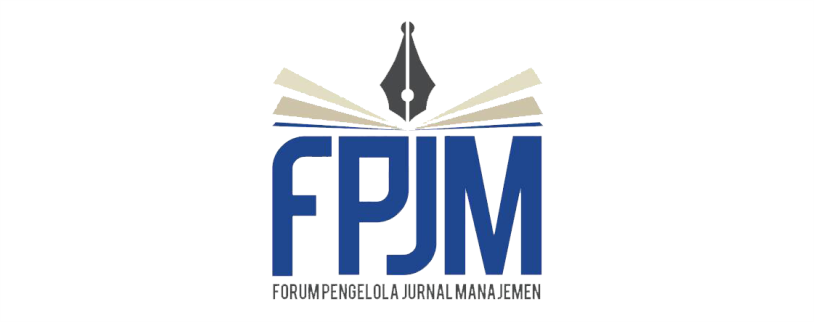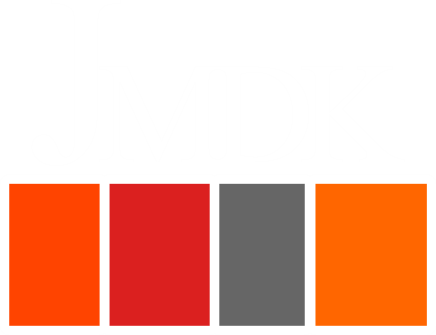Determinan Kinerja Usaha Mikro, Kecil, dan Menengah (UMKM) dalam Upaya Mendukung Banyuwangi sebagai Kota Tujuan Wisata
DOI:
https://doi.org/10.26905/jmdk.v7i2.3023Keywords:
Innovation, Market Orientation, MSME’s, Learning Orientation, Performance, Technology OrientationAbstract
This study aims to know the determinants of MSME performance in Banyuwangi. This research is an explanatory research. Samples determining in this study use a purposive sampling technique. Primary data in this study is collected by survey techniques for 51 MSME players in Banyuwangi. This study uses SEM-PLS analysis. The exogenous variables are Market Orientation (MO), Learning Orientation (LO), Innovation (IN), and Technology Orientation (TO). The endogenous variable is the performance of MSMEs. The results of this study show that MO, LO, and TO variables are not the factors that can improve the performance of MSMEs. In other word, the results show that MSME players have not considered MO, LO, and TO in their operations. The results of this study also show that the IN variable are able to improve the performance of MSMEs in Banyuwangi. This means that the higher the innovation carried out by MSME players, the more better the performance of MSMEs in Banyuwangi.
https://doi.org/10.26905/jmdk.v7i2.3023
Downloads
References
Abdillah, W., dan Hortono, J. (2015).Partial Least Square (PLS), Alternatif Structural Equation Modeling (SEM) dalam Penelitian Bisnis.Yogyakarta. C.V Andi Offset.
Atuahene-Gima, K. dan Evangelista, F. (2000), Cross-functional Influence in New Product Development: an Exploratory Study of Marketing and R&D Perspectives. Management Science, Vol. 46, No. 10, hal. 1269-1284.
Baba, Y. (2015). Does Learning Orientation Matter For Nonprofit Organization Performance? Empirical Evidence From Ghana. Leadership & Organization Development Journal, Vol. 36, No. 3, hal. 234-252
Batra, S., Sharma, S., Dixit, M.R., Vohra, N. and Gupta, V.K. (2015).“Performance Implications of Industry Appropriability for Manufacturing SMEs: Therole of Technology Orientationâ€, Journal of Manufacturing Technology Management, Vol. 26, No. 5, pp. 660-677.
Beneke, J., Beneke, J., Blampied, S., Blampied, S., Dewar, N., Soriano, L. et. al. (2016). The Impact Of MarketOrientation And Learning Orientation On Organisational Performance: A Study Of Small To Medium-Sized Enterprises In Cape Town, South Africa. Journal of Research in Marketing and Entrepreneurship, Vol. 18, No. 1, hal. 90-108.
Bhattarai, C. R., Kwong, C. C. Y., dan Tasavori, M. (2019). Market Orientation, Market Disruptiveness Capability And Social EnterprisePerformance: An Empirical Study From The United Kingdom. Journal of Business Research, Vol. 96, hal. 47-60.
Choi, S. (2014). Learning Orientation and Market Orientation as Catalysts for Innovation in Non-Profit Organizations.Nonprofit and Voluntary Sector Quarterly, Vol. 43, No. 2, hal. 393-413.
Ferdinand, Agusty T (2003) Kualitas Strategi Pemasaran Sebuah Studi Pendahuluan. Jurnal Sains Pemasaran Indonesia.Vol 1 No. 1
Halim. (2011). Kapabilitas Pemasaran sebagai Mediasi Pengaruh Orientasi Pasar Orientasi Pembelajaran dan Orientasi Kewirausahaan terhadap Kinerja Pemasaran (Studi pada Usaha Menengah di Sulawesi Tenggara). Jurnal Aplikasi Manajemen Vol. 1, No. 3, Hal. 472-484
Herath, H. M.A. dan Mahmood, R. (2013). Strategic Orientation Based Research Model Of SME Performance ForDeveloping Countries. Review of Integrative Business and Economics Research, Vol. 2, No. 1.
Hult, G.T.M., &Ketchen, Jr., D.J. (2004). Does market orientationmatter?: a test of the relationship between positionaladvantage and performance. Strategic management journal, 22, 899–906.
Hsieh, M. H. and Tsai, K. H. (2007). Technological Capability, Social Capital And The Launch Strategy ForInnovative Product.Industrial Marketing Management, Vol. 36 No. 4, hal. 493-502.
http://surabaya.tribunnews.com/2018/05/21/setelah-bekraf-giliran-kemenkop-umkm-garap-ekonomi-kreatif-banyuwangi diakses pada 30 Desember 2018
Jannah, S. M. (2018). Di Swiss, Kepala Bappenas Beberkan Peran UKM untuk Ekonomi Indonesiasumber: https://finance.detik.com/berita-ekonomi-bisnis/d-4274596/di-swiss-kepala-bappenas-beberkan-peran-ukm-untuk-ekonomi-indonesia diakses pada 30 Desember 2018
Jyoti, Jeevandan Sharman, Jyoti. (2012). Impact of Market Orientation OnBusiness Perfomance : Role of Employee Satisfaction and CustomerSatisfaction. Vision, 16, 4 Pp. 297-313.
Kocak, A., Carsrud, A., dan Oflazoglu, S. (2017). Market, Entrepreneurial, And Technology Orientations: Impact On Innovation And Firm Performance. Management Decision, Vol. 55, Issue 2, hal. 248-270.
Kumar.V, Eli Jones, Rajkumar Venkatesan, & Robert P. Leone. (2011). Is Market Orientation a Source of Sustainable Competitive Advantage or Simply the Cost of Competing?.Journal of Marketing.Vol. 75.
Kusuma, BiyanNidya. (2018). Orientasi Pasar, Inovasi, Orientasi Teknologi, Dan Manajemen Pengetahuan Dalam Meningkatkan Kinerja Bisnis UMKM Di Soloraya.NaskahPublikasi
Liu, H., Ke, W., Wei, K.K. and Hua, Z. (2013). “The impact of IT capabilities onfirm performance: The mediating roles of absorptive capacity and supplychain agilityâ€, Decision Support System, Vol. 54, No. 3, pp. 1452-1462.
Lita, R. P., Meuthia, dan Faisal, R. F. (2018). SMEs Performance Of Creative Industries Supporting Tourism In Indonesia: Market Orientation, Learning Orientation And Organizational Innovativeness As Determinants. Academic of Marketing Studies Journal. Vol. 22, Issue 1, hal. 1-18.
Maulenberg, T. dan Verhes, J., (2004),“Market Orientation, Innovativeness, Product Innovation, and Performancein Small Firmsâ€.Journal of Small Business Management Vol 42 (2), pp 134-154.
Methasari, M., Kurniawan, G., dan Sidik, A. R. (2018). Analisis Orientasi Pasar, Inovasi Dan Kreativitas Terhadap Kinerja Pemasaran Pada UMKM Di Kabupaten Madiun. Jurnal Dinamika Governance. Vol. 8, No. 2, hal. 176-188.
Morgan, R.E. and Berthon, P. (2009), “Market Orientation, Generative Learning, Innovation Strategy and Business Performance Inter-Relationships in Bioscience Firmsâ€. Journal of Management Studies, Vol. 45 No. 8, pp. 1329-1353
Nasution, Hanny N, (2004), Orientasi Pasar: Konsep, RelevansidanKonsekuensi. Usahawan.No.06 Th XXXIII Juni, Hal 3-9
Narver, J.C., dan Slater, S.F. (1990). The Effect Of A Market Orientation On Business Profitability. The Journal ofMarketing, hal. 20-35.
Pandya, V. (2012). Comparative Analysis Of Development Of SMEs in Developed And Developing Countries. In The2012 International Conference on Business and Management, hal. 6-7
Pelham, A. M. (1997). Mediating Influences on Relationship between Market Orientation and Profitability In Small Industrial Firms. Journal of Marketing Theory and Practice, Vol. 5, hal. 55-76.
Raharjo, P. (2009). Pengaruh Orientasi Pasarter hadap Kinerja Bisnis: Suatu Studi pada Industri Ritel dengan Menggunakan Skala Market Orientation. Media Riset Bisnis & Manajemen. p. 173-200
Real, J.C., Roldán, J.L. dan Leal, A. (2014). From Entrepreneurial Orientation And Learning Orientation To Business Performance: Analysing The Mediating Role Of Organizational Learning And The Moderating Effects Of Organizational Size. British Journal of Management, Vol. 25, No. 2, hal. 186-208.
Rhee, J., Park, T. dan Lee, D.H. (2010). Drivers of innovativeness and performance for innovative SMEs in SouthKorea: Mediation of learning orientation. Technovation, Vol. 30, No. 1, hal. 65-75.
Sadler-Smith, E., Spicer, D.P., &Chaston, I. (2001).Learning Orientations and Growth in Smaller Firms. Long Range Planning, 34, 139–158
Sinkula, J.M., Baker, W.E. dan Noordewier, T. (1997). A Framework For Market-Based Organizational Learning:Linking Values, Knowledge And Behavior. Journal of the Academy of Marketing Science, Vol. 25, No. 4, hal. 305-318.
Stewart, J., dan Mavondo, F.T. (2004), 24-25 February. Understanding Individual Components of Market Orientation and Learning Orientation as Predictors of Types of Innovation. Paper presented at the AGSE-Babson Regional Entrepreneurship and Innovation Research Exchange Forum, Melbourne, Australia.
Wang, Y. (2016). What Are The Biggest Obstacles To Growth Of SMEs In Developing Countries? An Empirical Evidence From An Enterprise Survey. Borsa Istanbul Review, Vol. 16, No. 3, hal. 167-176.
Yuliana, R., dan Pujiastuti, Y. (2018). Orientasi Kewirausahaan, Orientasi Pasar, Dan Strategi Bisnis Terhadap Kinerja Bisnis (Studi Kasus Pada UMKMdi Semarang). Tirtayasa Ekonomika, Vol. 12, No. 2, hal. 320-329.
Zhou, K.Z. and Li, C.B. (2010). How Strategic Orientations Influence The Building Of Dynamic Capability In Emerging Economies.Journal of Business Research, Vol. 63 No. 3, hal. 224-231.
Downloads
Additional Files
Published
Issue
Section
License
Authors who publish with this journal agree to the following terms:
(1)Â Copyright of the published articles will be transferred to the journal as the publisher of the manuscripts. Therefore, the author confirms that the copyright has been managed by the journal.
(2) Publisher of Jurnal Penelitian is University of Merdeka Malang.
(3) The copyright follows Creative Commons Attribution–ShareAlike License (CC BY SA): This license allows to Share — copy and redistribute the material in any medium or format, Adapt — remix, transform, and build upon the material, for any purpose, even commercially.












